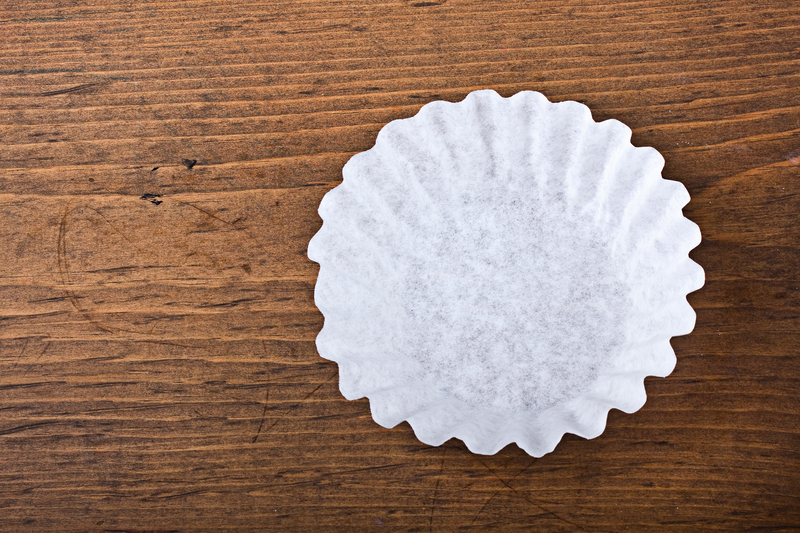Create a Mold-Free Sanctuary in Your Bathroom Space
Posted on 07/09/2025
Create a Mold-Free Sanctuary in Your Bathroom Space
Are you tired of battling persistent bathroom mold? Transforming your bathroom into a fresh, healthy, mold-free sanctuary is possible--and easier than you might imagine. In this comprehensive guide, discover effective strategies, preventive measures, and expert tips for keeping your bathroom space completely mold-free. Let's get started on the path to a cleaner, more inviting bathroom!
Why Mold Threatens Your Bathroom Sanctuary
Mold isn't just unsightly. It can affect indoor air quality and your health. Black mold, mildew, and other fungal growths thrive in damp, humid environments--making bathrooms the most vulnerable rooms in your home.
Key Risks Associated with Bathroom Mold
- Respiratory issues, allergies, and asthma attacks
- Structural damage to walls, ceilings, and fixtures
- Unpleasant odors that make bathrooms feel less inviting
- Decreased home value and higher maintenance costs
Understanding the causes and signs of bathroom mold is the first step towards prevention and maintaining a mold-free environment.

Understanding Bathroom Mold Growth
What Triggers Mold in Bathrooms?
Mold requires four key elements to flourish in your bathroom:
- Moisture--from showers, sinks, or leaks
- Warm temperatures, often typical in bathrooms
- Organic surfaces--like grout, wood, drywall, and wallpaper paste
- Poor ventilation, trapping humidity and moisture
When moisture and warmth mix with limited airflow, mold can grow in as little as 24 to 48 hours.
Common Areas Where Mold Hides in the Bathroom
- In and around shower and bathtub grout lines
- Behind or under sinks and vanities
- On bathroom ceilings and walls, especially in corners
- Around windowsills and bathroom vents
- Within or beneath bathroom mats, rugs, and towels
- Underneath loose tiles or damaged caulking
Routine inspection is crucial for detecting early-stage mold in these hidden areas.
Preventing Mold: Practical Steps for a Mold-Free Bathroom
Preventing mold growth is far simpler than constantly fighting outbreaks. Let's explore proven strategies for creating a healthy, mold-free sanctuary in your bathroom.
1. Optimize Ventilation
- Install a high-quality exhaust fan--and use it during and after every bath or shower for at least 20 minutes. Consider a timer switch for convenience.
- If possible, open bathroom windows to allow fresh air in and humid air out.
- Air out the bathroom by leaving the door open after use.
2. Control Humidity Levels
- Use a dehumidifier in your bathroom if humidity consistently exceeds 60%.
- Monitor humidity levels with an inexpensive hygrometer.
- Hang wet towels outside the bathroom to dry when possible.
3. Fix Leaks and Water Intrusion Promptly
- Regularly inspect under sinks, around faucets, and behind toilets for leaks or puddles.
- Seal cracks or gaps in tiles, grout, and caulking immediately.
- Address any ceiling stains or drips promptly and trace them to their source.
4. Keep Surfaces Dry
- After baths or showers, wipe down tiles, shower doors, and tub edges with a towel or squeegee to remove lingering moisture.
- Clean up water splashes from sinks and countertops as soon as possible.
- Use floor mats with waterproof liners and wash them regularly.
5. Choose Mold-Resistant Materials
- Use mold-resistant paint or mildew-inhibiting additives when painting bathroom walls and ceilings.
- Opt for porcelain, ceramic tiles, or natural stone rather than carpet or wood, which easily absorb moisture.
- Install water-resistant drywall (greenboard) in high-risk areas.
- Use silicone-based caulking instead of acrylic for better moisture protection.
6. Clean and Disinfect Regularly
- Scrub grout lines and caulking once a week to prevent mold.
- Use natural cleaners (like vinegar and baking soda) or a bathroom-specific mold remover.
- Launder towels, bath mats, and shower curtains frequently, ideally using hot water.
- Remove and replace any items that have grown mold and cannot be fully cleaned.
Natural and Commercial Solutions for Remediation
Eco-Friendly Mold Removal Techniques
If you spot mold, act quickly to clean it up with these effective and non-toxic solutions:
- White Vinegar: Spray undiluted vinegar on affected spots and let it sit for at least an hour before scrubbing away.
- Baking Soda: Mix baking soda with water to form a paste and use it with a brush to tackle stubborn mold.
- Hydrogen Peroxide (3%): Spray on the surface and leave for 10 minutes to kill mold spores.
*Always ventilate the bathroom well while cleaning and avoid mixing cleaning agents*.
Commercial Mold Removal Products
When natural options aren't enough, consider bathroom-specific antibacterial sprays, mildew removers, or mold-fighting solutions from trusted brands. Always follow manufacturer instructions and wear gloves and a mask during application.
Bathroom Renovation Tips for a Mold-Resistant Space
If you're planning a remodel or upgrade, now is the perfect time to design your bathroom for maximum mold resistance:
- Upgrade to Larger Tiles: Reduces grout lines where mold often forms.
- Install Frameless Shower Doors: Fewer seals and joints means fewer places for water to linger.
- Add Insulation: Helps reduce condensation on bathroom walls and ceilings.
- Replace Old Fans: Upgrade to a quiet, energy-efficient exhaust fan sized correctly for your bathroom's square footage.
- Improve Lighting: Brighter spaces dry faster and leave mold with fewer shadows in which to grow.
- Use Mold-Resistant Drywall and Paint: Modern options offer excellent protection in high-moisture zones.
With each new upgrade, you are investing in a healthier and cleaner mold-free bathroom that enhances your daily comfort and your home's value.
Easy Maintenance Habits for a Mold-Free Bathroom
Consistency is key. Adopting simple daily and weekly habits can go a long way toward keeping your bathroom completely mold-free:
- Open windows or run the fan after each shower or bath for at least 15-20 minutes.
- Quickly towel off damp surfaces, especially around sinks and tubs.
- Keep toiletries, razors, and bottles organized and off moist surfaces.
- Launder and rotate towels and mats so that none stay damp for long periods.
- Declutter to ensure air can flow freely around all surfaces.
Make these habits part of your daily routine and your bathroom will remain a mold-free sanctuary.
When to Call in the Professionals
For serious or recurring mold problems, it may be time for a professional assessment. Here's when you should seek expert help:
- Visible mold covers more than 10 square feet.
- Mold keeps returning despite regular cleaning and preventive steps.
- Mold has spread into walls, ceilings, or under flooring.
- You notice persistent, musty odors or unexplained health symptoms.
Professional mold remediation ensures safe removal, source identification, and full restoration--protecting the long-term value and safety of your home.

Frequently Asked Questions About Mold-Free Bathrooms
What's the best way to keep bathroom mold at bay?
The most effective way is a combination of proper ventilation, moisture control, regular cleaning, and using mold-resistant materials. Preventive steps are easier and cheaper than remediation!
Is bathroom mold a health risk?
Yes, especially for those with allergies, asthma, or weakened immune systems. Mold spores can cause respiratory issues and should always be addressed swiftly.
How often should I clean my bathroom to prevent mold?
At least once a week for full cleaning, but daily drying of wet areas is highly recommended to prevent growth.
Create Your Own Mold-Free Sanctuary Today!
Transforming your bathroom into a mold-free haven starts with diligence, awareness, and routine care. By combining ventilation, moisture management, regular cleaning, and smart design choices, you'll enjoy a fresh, invigorating bathroom space--and breathe easier every day.
Ready to reclaim your bathroom sanctuary? Begin with these proven mold prevention tips and enjoy a healthier, happier (and mold-free) bathroom space for years to come!




